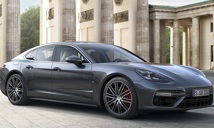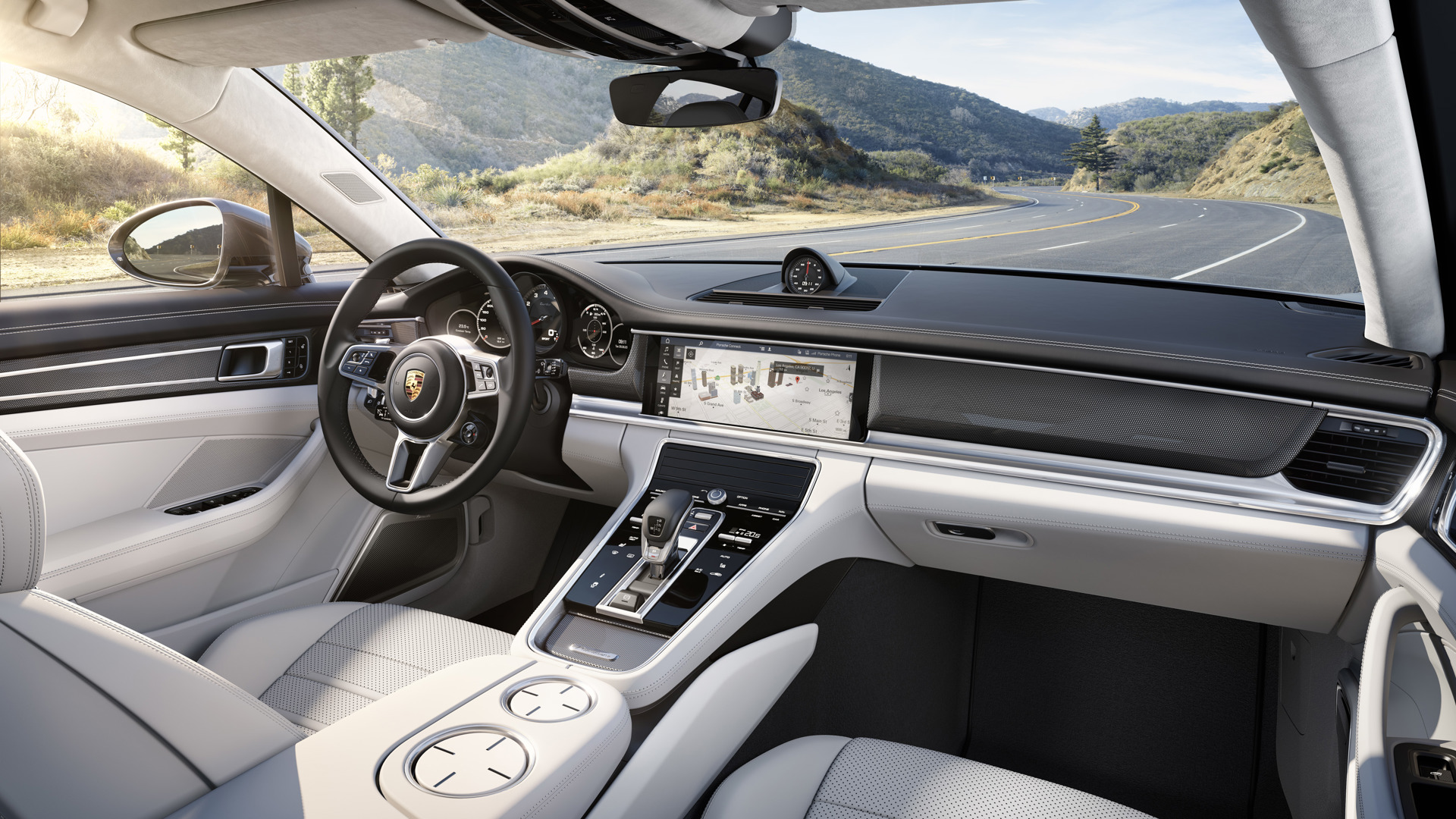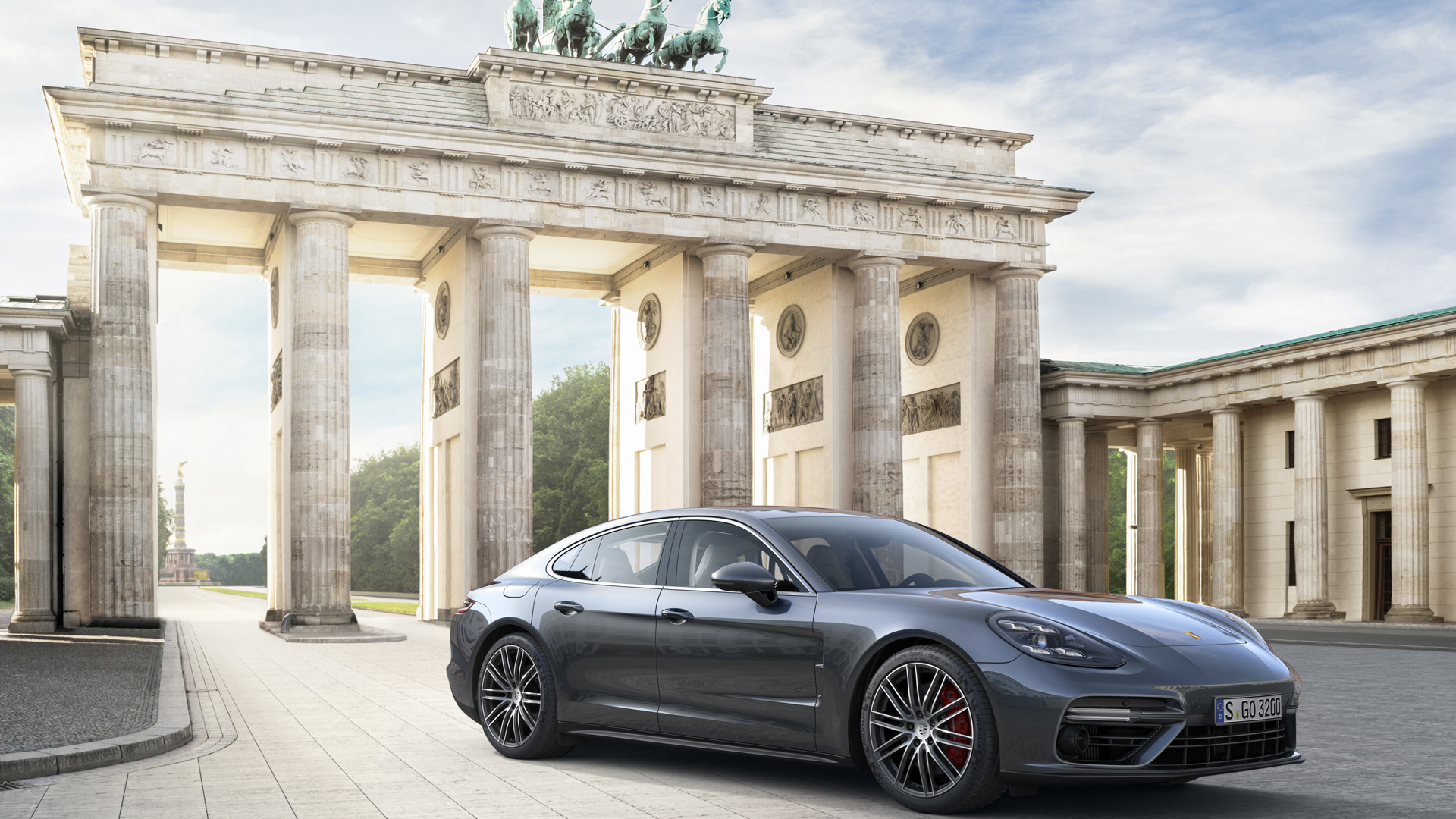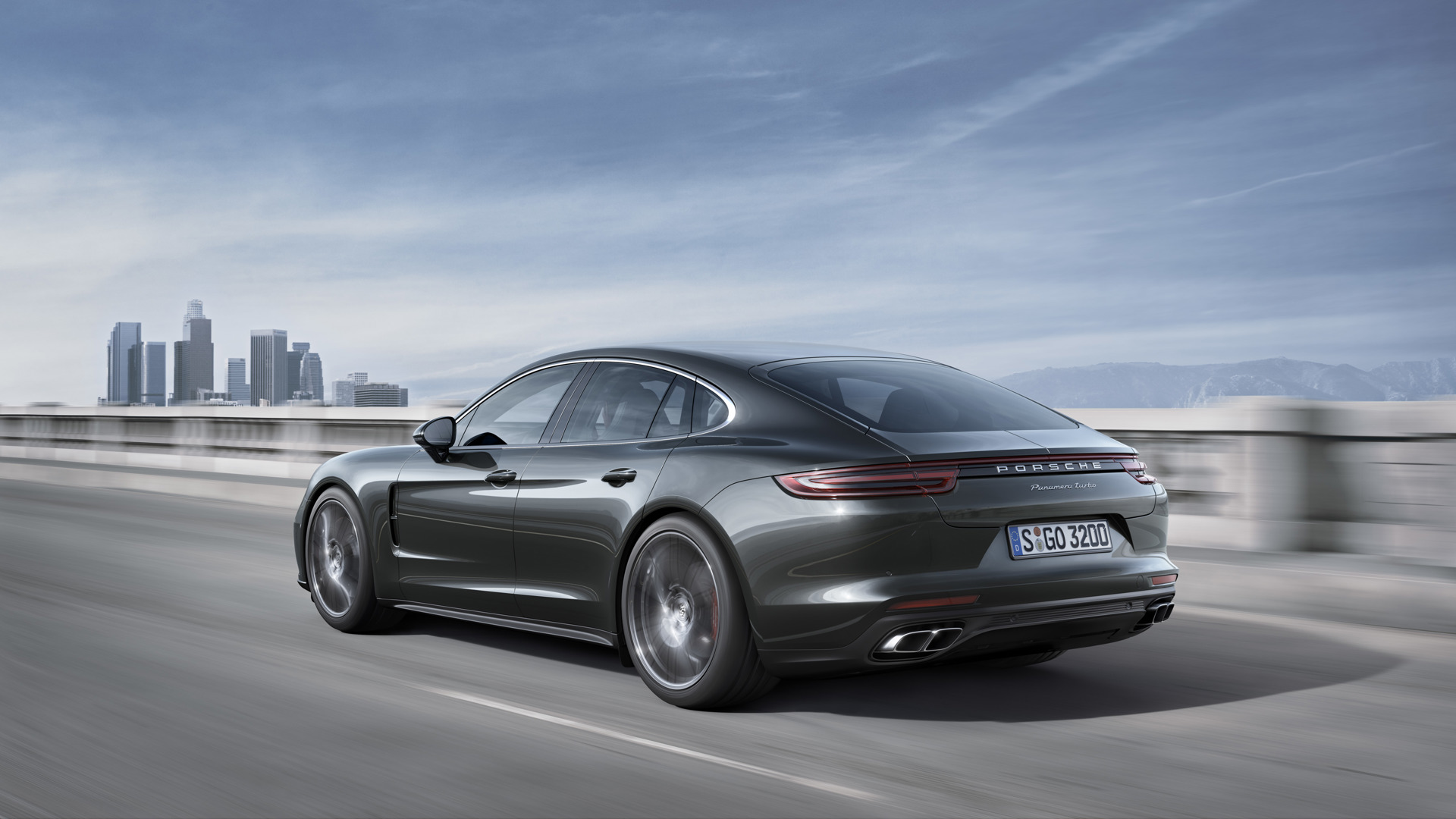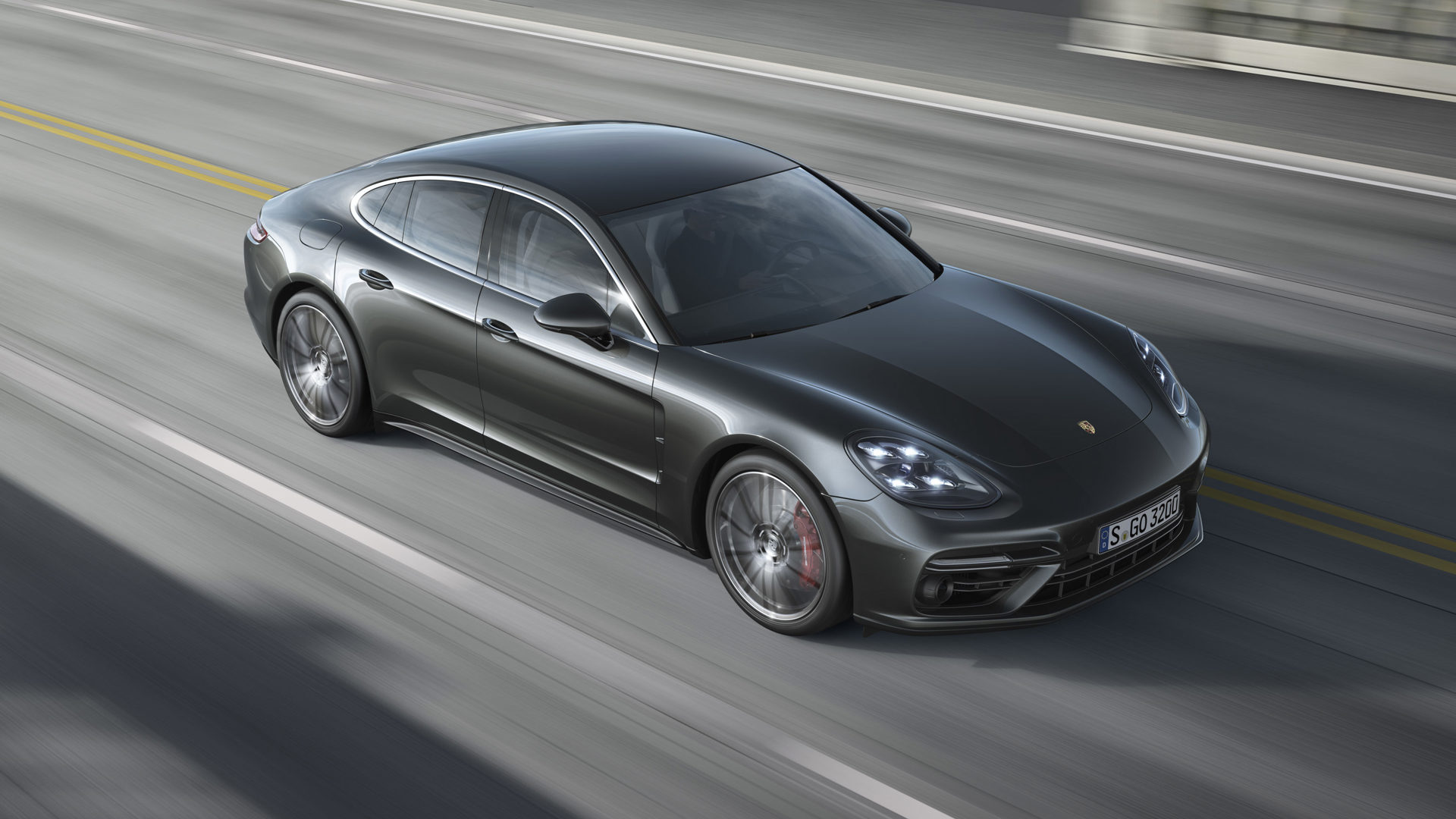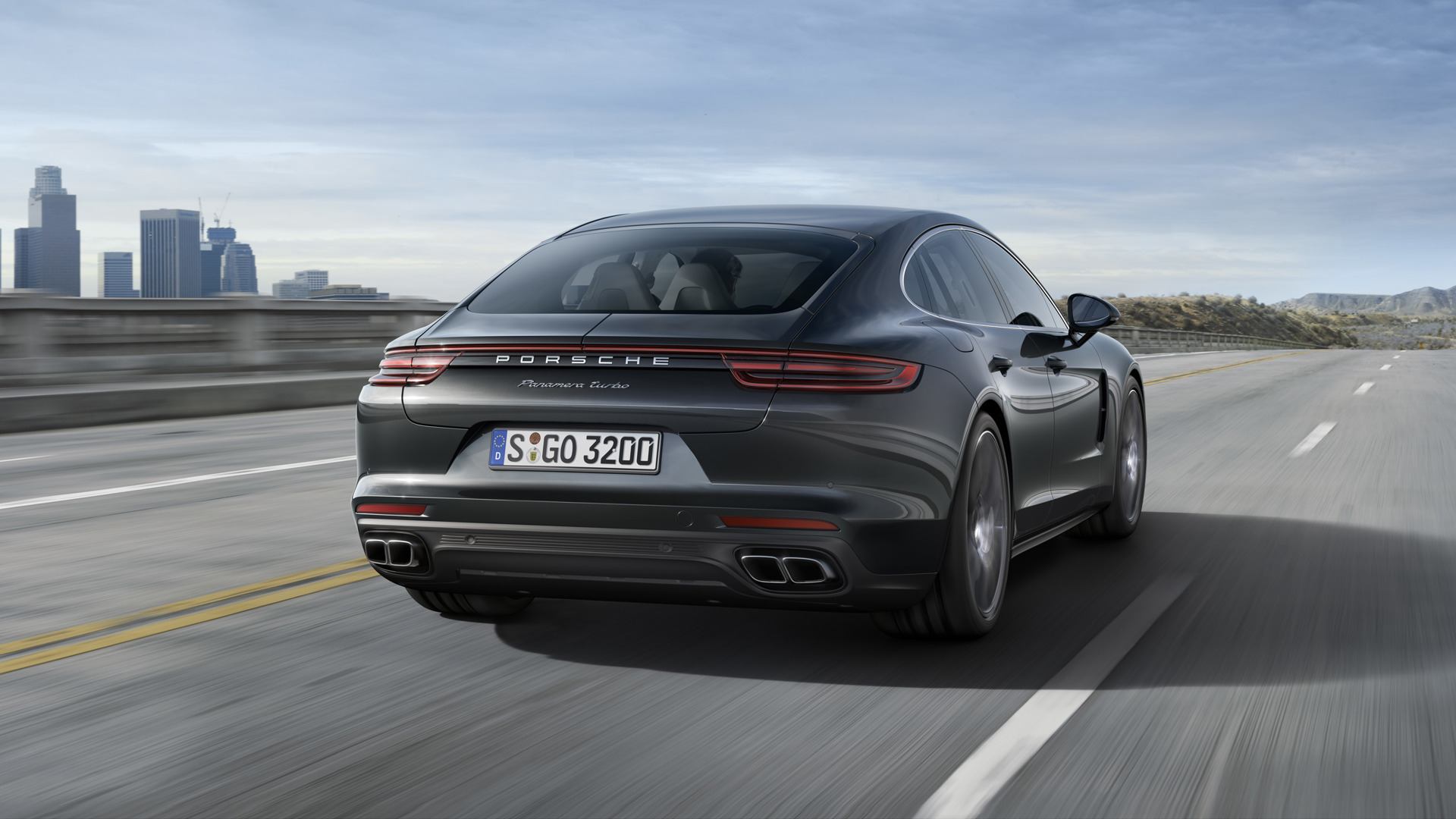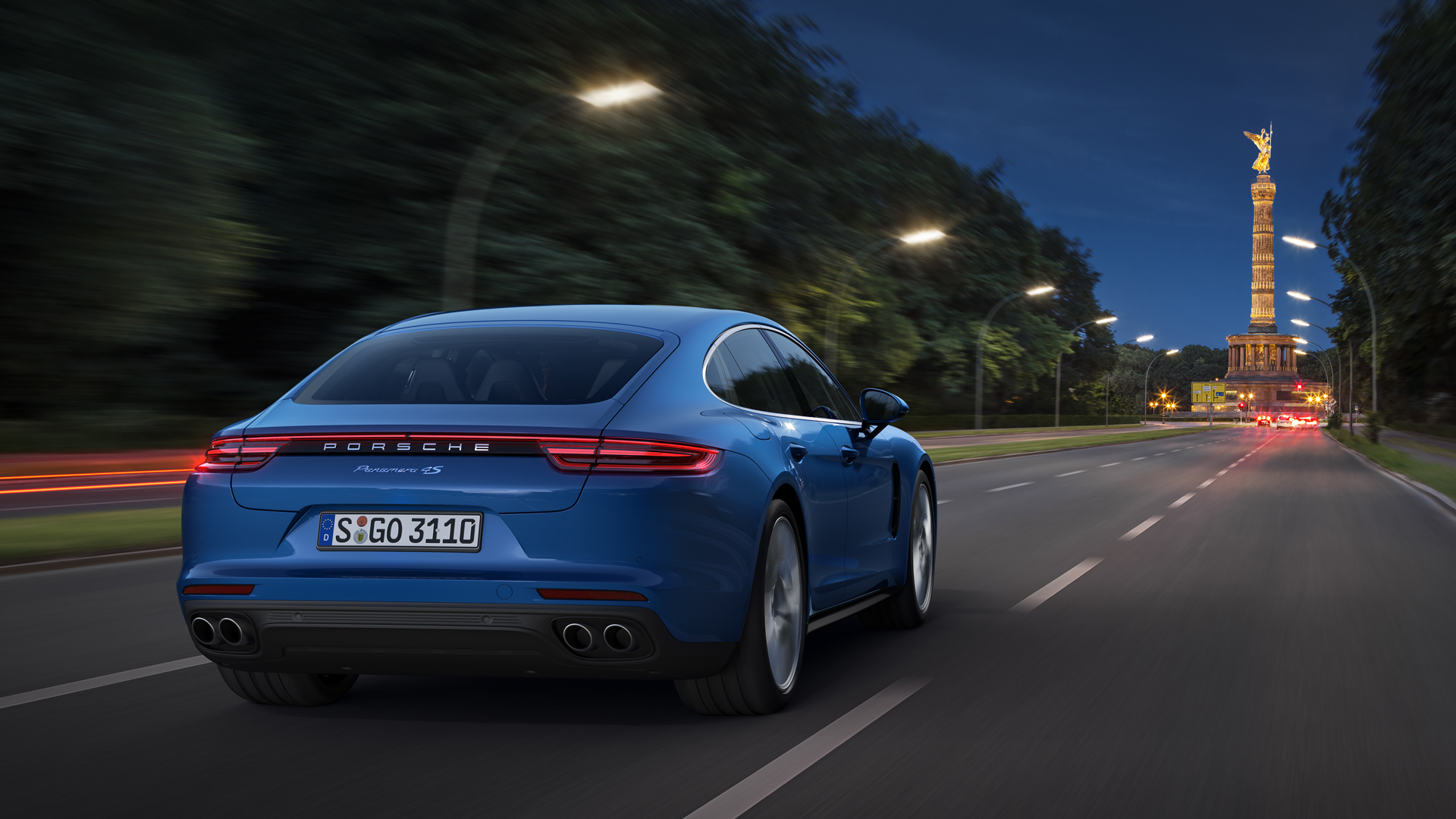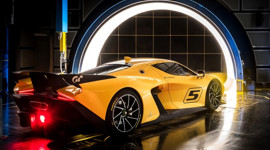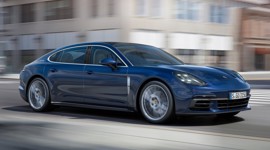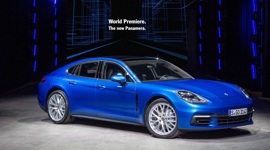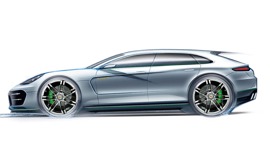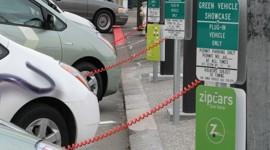When the Porsche Panamera was first revealed in 2009, cries came from the internet that the sky had fallen and that this was the demise of Porsche. First they made an SUV, and now this? It didn't help that the nose looked like a 911 with a bee-sting allergy, and the rear wasn't the prettiest shape to come out of Stuttgart either. Well, the Panamera continued to sell, and the 911 kept being the 911, and the sky didn't fall after all. Enough so that now, after seven yearsb it's time for an all-new model.
The all-new Panamera starts with a much sharper body. The nose is sleeker, more taut, and a much better representation of the classic Porsche nose. This continues to the side, where the C-pillar and rear haunches look very close to a 911 coupe. They're muscular and purposeful, much unlike the previous car. This extends to the rear, where there is still a hatch, but it has a short decklid that follows the rake of the glass. A much better look than the drooping fall-off of the outgoing car. The taillights are much sharper, rectangular instead of oval, with the rear looking much like the new 718. The new roofline is 2 cm lower over the rear seat, and it really does improve the lines of the car. The whole car is clearly now a four-door coupe instead of a five-door hatch. More Audi A7 than A3 hatch.
The two launch models will be the V6-powered Panamera 4S and the V8 Turbo. Both have all-new engines with twin-scroll turbos and direct injection. The V6 is a 2.9 L unit that makes 440 hp (20 more than the old one) and 405 lb-ft of torque. As the 4S name would suggest, the car is all-wheel drive, and the transmission is a new eight-speed dual-clutch unit. The V8 displaces 4.0 L and makes 550 hp and 567 lb-ft of torque. That's 30 hp more than the outgoing one. Using the same eight-speed as the 4S, the Turbo is quoted at 3.6 seconds 0–100 km/h. The V8 gets variable displacement and can operate as a four to save gas. Fuel economy is said to improve by up to 1.1 L/100 km in the European cycle.
The new car is 34 mm longer, a hair wider, and just a tiny bit taller (5 mm). The new body is largely aluminum for weight savings as well. The new chassis has optional air suspension, Porsche active suspension management, dynamic chassis control with torque vectoring, and a four-wheel steering system to improve both handling and stability.
Inside, there are new assistance systems including night vision with thermal imaging. The instrument cluster has two 7.0-inch displays with an analogue tachometer in the centre (as it should be). There is a 12.3-inch screen for the infotainment system, with Apple CarPlay. Expect power everything, and as much leather, Alcantara, carbon fibre, or aluminum trim as you can afford to check off the options list.
The Panamera should arrive in Canada before Spring 2017, but you can order yours now. Pricing starts at $114,300 for the Panamera 4S and $167,700 for the Turbo.
